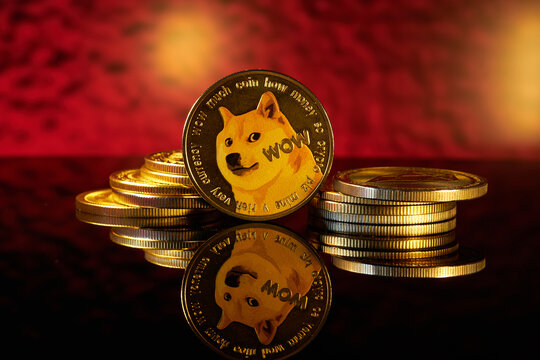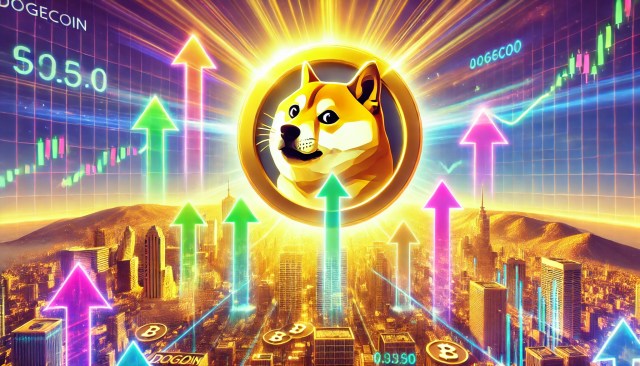How easy is it to buy and sell DOGE coins?
While viewed as a joke by many crypto enthusiasts, Dogecoin (DOGE) is a cryptocurrency built using code from Bitcoin (BTC), Litecoin (LTC), and Bitcoin fork Lucky Coin (LKY). DOGE was designed to make fun of the Bitcoin hype but eventually gained a significant acceptance following the image of a Shiba Inu plastered onto a crypto coin.
Since Dogecoin’s inception, many investors have been wondering how to sell Dogecoin for cash and wanted to know the answer to the question: “How easy is it to buy and sell DOGE?” Fortunately, we’ve got the answer to those questions and more. Welcome to the beginner’s guide on how to sell DOGE for cash and crypto.
What is Dogecoin?
Dogecoin is a meme coin created by two software engineers Billy Markus and Jackson Palmer in 2013. Based on the “doge” Shiba Inu meme, Palmer tweeted about making a doge-themed cryptocurrency.
Markus saw Palmer’s tweet and started developing Dogecoin of his own accord. Dogecoin is a fork of Lucky Coin which is a fork of Bitcoin, so it’s not wrong to say Dogecoin is based on Bitcoin’s code.
Bitcoin’s initial codebase made it easy for Markus to adjust critical elements and launch Dogecoin. In fact, it only took Markus three hours to develop and release Dogecoin. Palmer joined the project shortly afterward.
Dogecoin quickly grew in popularity due to its meme-like quality and low price. Reddit even integrated a DOGE tipping feature to reward users, and Tesla founder Elon Musk tweeted positively about Dogecoin many times. Many investors also use DOGE to pay for goods and services online.
Because DOGE is based on Bitcoin, Dogecoin is a proof-of-work (PoW) cryptocurrency that requires miners to validate transactions. On the Dogecoin network, miners are called “diggers.” further to poke fun at the prospect of mining cryptocurrency.
How to sell Dogecoin for cash and crypto
To sell Dogecoin, one must first acquire Dogecoin. Investing in Dogecoin requires the user to sign up for a cryptocurrency exchange that supports the Shiba-faced asset. Binance or Coinbase are good examples of exchanges that support DOGE.
Once signed up for an exchange, a user must input a payment method or send existing cryptocurrency to the exchange wallet. From there, investing in Dogecoin is as easy as finding the asset and buying it with fiat or converting existing crypto to DOGE. Depending on the exchange, however, there are a few ways to purchase DOGE.
Different order types give traders many options when buying or selling cryptocurrencies, whether they want to target a specific selling or purchase price or set the transaction's timing. Limit and market orders are among such market orders that traders utilize to buy or sell digital currencies.
Limit order
Limit orders enable investors to buy DOGE at a specific price. For example, suppose one wants to buy DOGE at $0.20, but it’s currently priced at $0.23. The investor would create a limit buy order, inputting the amount of DOGE they’d like to buy at $0.20. That order will not be fulfilled until DOGE falls to $0.20. If a cryptocurrency’s price never reaches the one asked for in a limit order, it will never be fulfilled.
Market order
Market orders enable investors to buy DOGE at its current market price. A market order tends to be fulfilled instantly, if not seconds after creating one. Market orders are less risky than limit orders as the near-instant nature of limit orders is not subject to volatility.
Sell DOGE for cash and crypto
No matter how the DOGE is acquired, DOGE holders can sell the cryptocurrency whenever they’d like, and one can do it on any crypto exchange that supports Dogecoin.
If a user never moved their Dogecoin from the exchange wallet, setting up a sell order is easy. If the DOGE was transferred to another wallet, it must be sent to a wallet on the exchange of choice.
When the Dogecoin is in an exchange wallet, the investor can sell instantly via a market order or at a future price using a limit order. Aside from the market order and limit order selling types, there’s also a stop-loss order method.
A stop-loss order prevents a trader from losing their funds in case of an asset price crash. When selling DOGE, one might set a stop-loss for 15% of their current DOGE portfolio. If DOGE crashes overnight and drops 25%, the stop-loss order would have automatically sold when the portfolio fell by 15%.
Either way, the trader is losing money. But, a stop-loss prevents the trader from losing more than they could have by selling assets before the price drops too low.
Best places to sell DOGE
While all sorts of cryptocurrency exchanges support selling DOGE, only a few are the best places to sell DOGE: Kraken, Robinhood and Binance app.
How to sell DOGE on Robinhood
While investors primarily view Robinhood as a stock trading platform, the app has expanded into cryptocurrency trading. Selling DOGE on Robinhood is easy as well, requiring only a few steps.

How to sell Dogecoin on Kraken
Kraken users can convert DOGE to Bitcoin, United States dollar and euro. All that’s required is holding DOGE in the Kraken DOGE wallet by signing up for a Kraken account. To sign up for a Kraken account, you need an email address, username and a strong password. Then, the Kraken account needs to be verified. Your name, country of residence, birth date and phone number are all that are required for verification purposes.
From there, users can sell DOGE for Bitcoin after creating a deposit address in their Kraken account. Otherwise, if a DOGE holder wants to sell DOGE for fiat, they’ll have to follow Kraken’s Know Your Customer (KYC) policies before doing so.

How to sell Dogecoin on the Binance app
Binance app users can trade their DOGE for their local fiat, Tether (USDT), or various other trading pairs. After holding DOGE in their Binance wallet, an investor can head to the “Trade” tab within the Binance dashboard and choose to sell DOGE via their choice of order type.

The future of Dogecoin: Is DOGE a good investment?
DOGE is faster and cheaper to transact with as compared with its competitors such as Bitcoin, which automatically makes Dogecoin a better investment asset. However, there are various key factors to consider before deciding if DOGE is a good investment.
For some traders, DOGE is an inflationary asset. Inflationary means there’s an unlimited supply of DOGE which removes any sense of scarcity from Dogecoin. DOGE’s lack of scarcity could lead to Dogecoin becoming less and less valuable as the network produces more tokens.
The Dogecoin network releases 10,000 DOGE into circulation with every block being validated. Overall, 10,000 DOGE releasing every block results in around 5 billion DOGE issued a year.
It’s important to remember that Palmer and Markus designed DOGE as a joke, hence the token’s inflationary aspect. Palmer and Markus’ intention might lead one to assume DOGE is not a good future investment. That said, considering blockchain networks are open source, the community is the real deciding factor.
In fact, the DOGE community is working to bring new scalability and security upgrades over the next year. Whether or not these upgrades contribute to a solid long-term token is anyone’s guess.
At the end of the day, whether or not DOGE is a good investment is entirely up to the investors’ sentiments. Some might use DOGE for simple transactions or paying for goods and services. Others might be looking for a long-term DOGE investment so they can sell DOGE later and should do some research before making such a decision.











